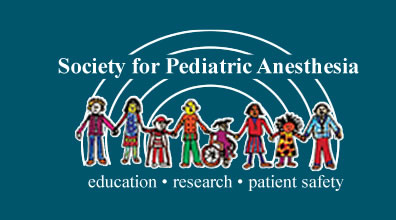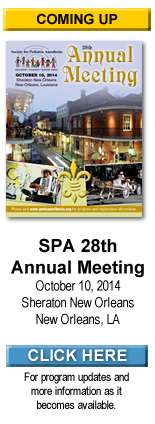New Orleans, host city of SPA’s 28th Annual Meeting
by James J. Fehr, MD, FAAP
Annual Meeting Program Chair
St. Louis Children’s Hospital and Washington University
St. Louis, MO
La Nouvelle-Orléans, où les bon temps roulent . . . New Orleans, where the good times roll, was founded on May 7, 1718 by the French on land inhabited by the Chitimacha people. The Treaty of Paris (1763) ceded the colony to the Spanish Empire. It was returned to the French in 1801 and two years later was sold to the U.S. by Napoleon to support his European travels. Travelers strolling past the black balconies and ornate gates and of the Vieux Carré, the French Quarter, are transported back in time by the architecture dating from that era.
The British attacked New Orleans in the War of 1812. They were rebuffed and defeated by future president Andrew Jackson and his motley band of soldiers, including pirate Jean Lafitte, two weeks after the Treaty of Ghent had ended the war. The Battle of New Orleans was memorialized by Johnny Horton in his 1959 rendition of Jimmy Driftwood’s song.
N'awlins is a major port and the gateway to the Mississippi River. It was a principal import-export site for young America, including slaves and cotton. The New Orleans slave market was the largest in the U.S. and support of the slave trade a major component of the city’s wealth. By 1840 New Orleans was the wealthiest and third most populous city in the US.
The linguistic and racial history of the city is complex. The French language was reinforced by an influx of refugees from the Toussaint L’Ouverture-led Haitian revolution which had outlawed slavery in 1801 in Haiti and had established the second republic in the Western Hemisphere. As part of the Confederacy during the Civil War, New Orleans was occupied in 1862 by Union troops under General Benjamin Butler who abolished French language instruction in schools. The last French Language newspaper, L’Abeille de la Nouvelle-Orléans (New Orleans Bee), ceased publication in December 1923.
The New Orleans Riot in 1866 spurred the passage of the Reconstruction Bill and the 14th Amendment. Louisiana was readmitted to the Union in 1868 and reconstruction ended in 1877 with the withdrawal of federal troops. Jim Crow laws followed, establishing racial segregation which resulted in the disenfranchisement of freed slaves and gens de couleur libres (free persons of color) who had been free before the war. Battling against this injustice, the Comité du Citoyens (Citizens Committee) was established to fight for civil rights.
Homer Plessy, one of their members, challenged the law by riding in a whites only commuter car from New Orleans to Covington, Louisiana. In its 1896 decision Plessy vs. Ferguson, the U.S. Supreme Court ruled that “separate but equal” accommodations were constitutional. In 1960, in New Orleans, a brave six year-old school child, Miss Ruby Bridges, became the first African American to attend an all white public school in the South. This event was immortalized in Norman Rockwell‘s painting, The Problem We All Live With. She turns 60 this year, so happy birthday Ms. Bridges.
In August 2005, the city was hammered by Hurricane Katrina, which killed over 1,500 people, mostly in New Orleans and the parishes to the south. The city has gradually emerged from that disaster and the people of New Orleans have demonstrated their fortitude and resiliency in emerging from the hurricane’s wreckage and reestablishing their cultural dominance in tourism, through music, Mardi Gras, sports, entertainment and culinary adventures that make this one of the great cities of America and the world.
New Orleans, the birthplace of jazz, has nearly unlimited opportunities for adventures. Louis Armstrong played in King Oliver’s Band and is perhaps the most famous of the countless musicians who continue to provide the beat for this city’s pulse. From Professor Longhair and James Booker to Dr. John and Snooks Eaglin, from gospel singer Mahalia Jackson to rappers Master P and Lil’ Wayne, New Orleans has always been rich in sound.
The Big Easy has been immortalized in films from Easy Rider to A Streetcar Named Desire, from the series Treme to Suddenly, Last Summer and The Cincinnati Kid. Anne Rice’s Lestat, Kate Chopin’s The Awakening, John Kennedy O’Toole’s A Confederacy of Dunces, are a few examples of the abundant literary output that has been inspired by the Crescent City.
There is never a lack of things to do in this city. There is the New Orleans Museum of Art, the National World War II Museum, the Audubon Nature Institute, the Garden District, Cemetery Tours to visit Marie LeVeau, and the SPA meeting. Similarly, when hungry or thirsty, there is never a lack of opportunity for any individual palate to find something satisfying.
A good portal for starting your New Orleans escapades is www.neworleansonline.com, which offers a useful interactive map and Visitors Guide for planning your adventures. So come to New Orleans, join us at the 28th Annual Meeting of the Society for Pediatric Anesthesia and laissez les bons temps rouler!


